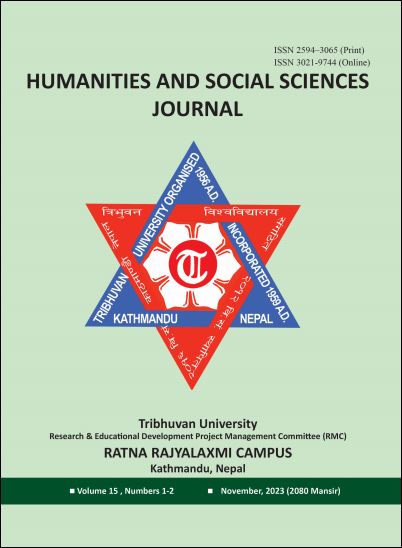The Link between Water Scarcity and Forced Migration: An In-depth Analysis of Chaubise Rural Municipality Ward No 3 and 4, Dhankuta District
DOI:
https://doi.org/10.3126/hssj.v15i1-2.63789Keywords:
water access, enough resources, drinking water systems, inaccessibility, migrationAbstract
Using inductive and deductive methodologies, this study uses a mixed-method research design to examine migration patterns in Chaubise Rural Municipality Wards No. 3 and 4, Dhankuta District. A thorough study was built using quantitative data that was gathered using structured questionnaires and qualitative information. The study reveals a noteworthy occurrence of permanent migration, primarily driven by economic development, increased work opportunities, restricted access to clean water, and conflicts between people and wildlife. Economic expansion and better job chances stand out among these elements as the main inducers of migration. Access to drinking water is still a critical issue, although it is a secondary element due to communities' historical rejection of piped drinking water services and related levies.




